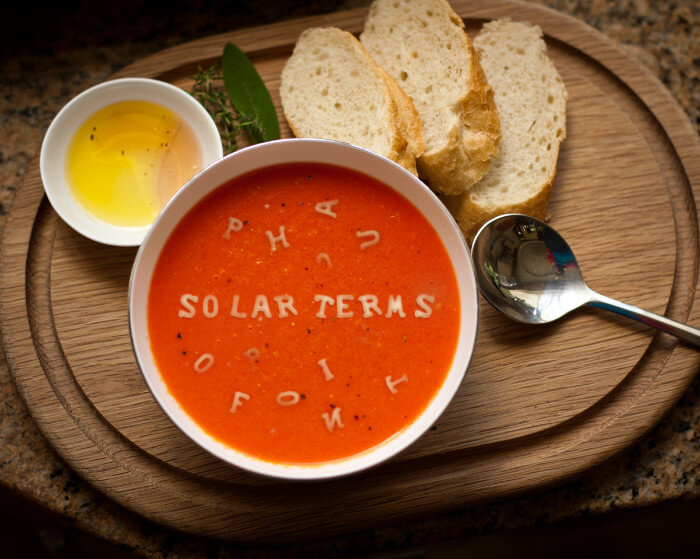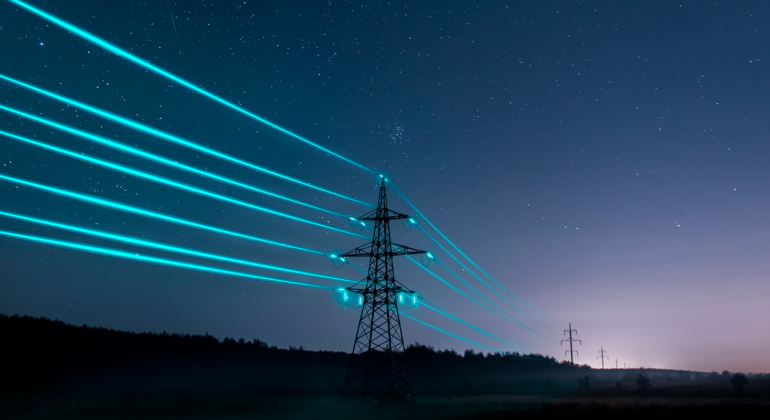As a speech communication grad with Southern roots, I am constantly in awe of unique neighborhood dialects and the words we use every day. Language has a distinct and powerful way of defining communities. When I was a young girl, in my hometown of Hartwell, Georgia, my mom used to say, “Stop burning daylight.” I knew that meant to cut the lights off during the day, saving power whenever possible.
In other parts of the US this phrase is referred to colloquially as: going green, practicing energy conservation, lower your energy bills, reduce energy consumption, be more energy efficient and simply, saving energy. Around the world? You may hear “Ahorra energia, Economisez de l’energie, and Poupe energia.”
The renewable energy industry also has its share of unique acronyms that are unknown to those who are not hearing them on the daily.
This community may be a group of conscious and bright individuals, but when I first started with the Kiterocket team, I was glad we had “Trainings with Tom” to decipher all the jargon.
After actively listening, taking notes and reading daily on the clean energy industry over the course of my first few months, I’ve compiled a relatively short list of essential acronyms necessary to bridge the language gap and easily use the lingo of the renewable energy industry.

Renewable Energy and Solar Terms
| Acronym | Word | Definition |
| AC | Alternating current | Alternating current is a type of current that alternates in direction. AC is the current used by most household appliances in our homes. |
| AAR | Applicable retail rate | Applicable Retail Rate means the usual customary retail rate charged by an operator to individual retail customers. In the energy world, this refers to the price per kilowatt hour for energy. |
| ASHP | Air source heat pump | According to the U.S. Department of Energy, an ASHP can provide efficient heating and cooling for your home. When properly installed, an air-source heat pump can deliver up to three times more heat energy to a home than the electrical energy it consumes. This is possible because a heat pump transfers heat rather than converting it from a fuel like combustion heating systems. |
| BOS | Balance of systems | BOS encompasses all the miscellaneous components of a Photovoltaics (PV) system other than the panels, such as racking, trackers, wires, nuts and bolts, fuse boxes, and other parts. |
| COU | Consumer owned utility | A consumer owned utility is one where the ratepayers own the utility rather than corporate shareholders. Electric co-ops in Minnesota supply approximately 22.9% of the state’s power and serve over 1.7 million consumers according to the Minnesota Rural Electric Association. |
| DC | Direct current | Direct current is an electric current that flows in a single, constant direction. Solar panels and batteries generate direct current and must be converted to AC (see above) by “an inverter” for the energy to be used by most household appliances. |
| DOE | Department of energy | The DOE is an executive department of the U.S. federal government that oversees U.S. national energy policy. |
| EFS | Efficient fuel switching | Fuel switching replaces inefficient fuels with cleaner and economical alternatives, such as substituting coal or kerosene for natural gas. Complimented by modern equipment upgrades, fuel switching is a simple approach to reducing energy consumption and costs for end-users, while also curbing carbon emissions. |
| EIA | Energy Information Administration | The U.S. Energy Information Administration (EIA) is a principal agency of the U.S. Federal Statistical System responsible for collecting, analyzing, and disseminating energy information to promote sound policymaking, efficient markets, and public understanding of energy and its interaction with the economy and the environment. |
| EV | Electric vehicle | An automobile that runs on electricity. You’ve heard of Rivian, right? More people than ever are charging their EVs via solar systems. |
| EPC | Engineering, procurement and construction | An EPC is a company that designs the system, engineers the project, procures the components and supplies, and constructs the solar PV systems. The term often applies to commercial- and utility-scale solar installers, but there are residential EPCs as well, such as SolarCity. |
| ESG | Environmental Sustainability and Governance | Sustainability and in some cases CSR is being replaced by ESG.
Some companies put out sustainability reports or ESG reports that reflect their stance and protocols regarding sustainability. |
| GW | Gigawatt | One gigawatt = 1,000 megawatts = 1 billion watts. |
| HPBC | Hybrid Passivated Back Contact | Solar modules equipped with HPBC, a modern and high-efficiency solar cell technology that is said to considerably improve the cell’s light absorption and photoelectric conversion capabilities by adjusting the cell’s internal structure and can increase panel output power. |
| HVAC | Heating ventilation and air conditioning | Heating, ventilation, and air conditioning is the use of various technologies to control the temperature, humidity, and purity of the air in an enclosed space. Its goal is to provide thermal comfort and acceptable indoor air quality. Improving, installing and maintaining efficient HVAC systems is a large part of energy efficiency jobs. |
| IPP | Independent power producer | Utility-scale projects are often owned by IPPs and they sell their electricity to the utility |
| IRA | Inflation reduction act | The Inflation Reduction Act (IRA) offers commercial solar and energy storage projects up to 10% additional tax credit for projects built within an “energy community.” |
| ITC | Investment tax credit | Extended last year by Congress, the 30% U.S. federal tax credit is awarded to residential, commercial and utility owners of solar energy systems. |
| KW | Kilowatt | One kilowatt = 1,000 watts. When solar installers talk about the size of solar installation (how much power it can generate in full sun), they typically refer to it in KW. For example, the average size of a U.S. home solar system is about 5 KW. |
| KWh | Kilowatt hour | A kilowatt-hour measures the rate of energy consumption. One kilowatt-hour is equal to consuming 1,000 W for one hour. When solar installers talk about the amount of solar energy that can be generated over the course of a day, month or year, KWh is used. |
| LLNL | Lawrence Livermore National Lab | On Dec. 5, 2022, a team at LLNL’s National Ignition Facility (NIF) conducted the first controlled fusion experiment in history to reach this milestone, also known as scientific energy breakeven, meaning it produced more energy from fusion than the laser energy used to drive it. This first-of-its-kind feat will provide invaluable insights into the prospects of clean fusion energy, which would be a game-changer for efforts to achieve a net-zero carbon economy. |
| MW | Megawatt | One megawatt = 1,000 kilowatts = 1 million watts. A big solar farm could be hundreds of megawatts. |
| NEM | Net energy metering | NEM is like mobile phone rollover minutes for solar energy. The utility will credit solar owners for any excess energy they send back to the grid. It used to be that you could get a full credit for every solar kWh sent back to the grid. Now, utilities are only crediting customers with 25% to 75% of the credit. |
| O&M | Operations and maintenance | O&M companies service solar systems during their 20- to 25-year lifetime. They monitor production, check the equipment for wear, replace parts, maintain the site, and keep the panels clean. O&M is very important for solar system owners because it ensures that system is generating the most solar power possible—and maximizing the revenues for the system owners. O&M is part of what’s called asset management. |
| PACE | Property- assessed clean energy | PACE is a way to finance the installation of renewable energy and energy efficiency for homeowners and businesses. PACE bonds fund clean energy installations within a city or state region. |
| PCS | Power conversion system | Part of an energy storage system that converts incoming power to make it storable. |
| PERC | Passivated Emitter and Rear Contact | PERC solar modules are structurally like other silicon panels on the market and one of the first to appear in the US back in the 80s. |
| PV | Photovoltaics | The semiconducting process by which sunshine is converted into energy by way of solar cells and panels. A basic PV system is mainly composed of solar panels, racking, inverter(s) and wires. |
| RPS | Renewable portfolio standard | An RPS is a law passed by a state that requires a minimum amount of renewable energy production in the state by a certain date. |
| SEER | Seasonal energy efficiency ratio | The seasonal energy efficiency ratio (SEER) is the ratio of the total heat removed from an air-conditioned space during the annual cooling season divided by the total electrical energy consumed by the air conditioner during the same season. The higher the unit’s SEER rating the more energy efficient it is. |
| VCE | Vibrant clean energy | Vibrant Clean Energy (VCE) is a company known for its wind and solar power forecasts. VCE released an analysis of low income and energy communities census tracts (see map below), according to their interpretation of the IRA. In its analysis, the group identifies brownfield sites, former coal communities and power plants, and former fossil fuel (oil and gas) regions. |
| W | Watt | The watt is the basic unit of measurement for power generation. |
| WAP | Weatherization assistance program | According to the U.S. Department of Energy, the WAP reduces energy costs for low-income households by increasing the energy efficiency of their homes, while ensuring their health and safety. The program supports 8,500 jobs and provides weatherization services to approximately 35,000 homes every year. |
Mom also said that if we could discover a way to bottle a young person’s energy and sell it, we would be set for life. I also remember our first ac unit or air conditioning that came to the house, along with when we got our first generator. If only mom could see the solar panels when we get a new roof, it’s a countdown.
For readers new to this industry, I hope the list above helps bring some clarity in your research. For renewable experts, feel free to comment with more definitions of conservation or energy sayings that are helpful as this solar soup adds more ingredients—make those acronyms every day.


